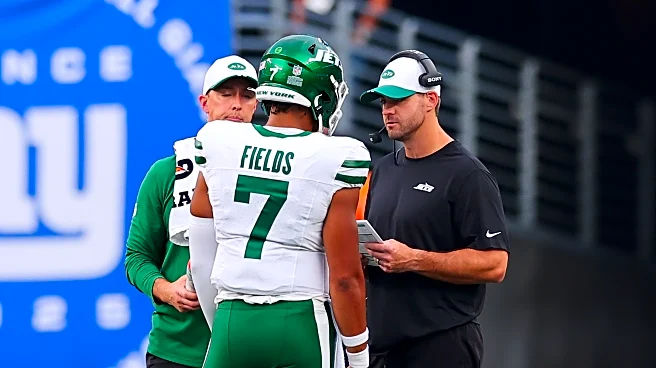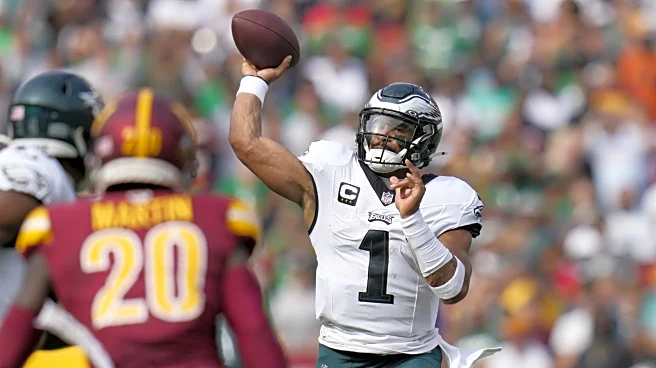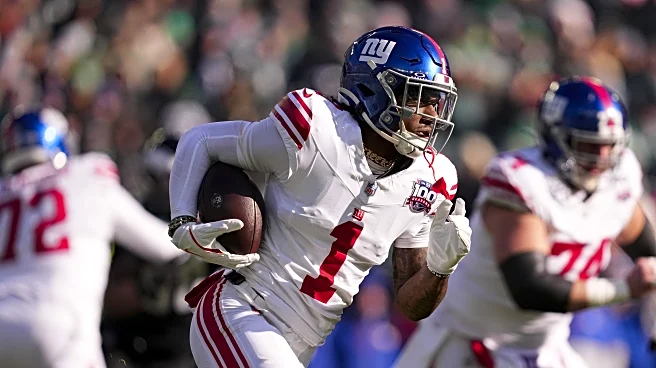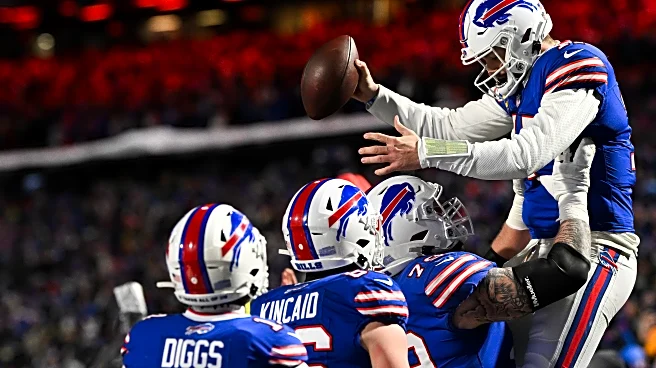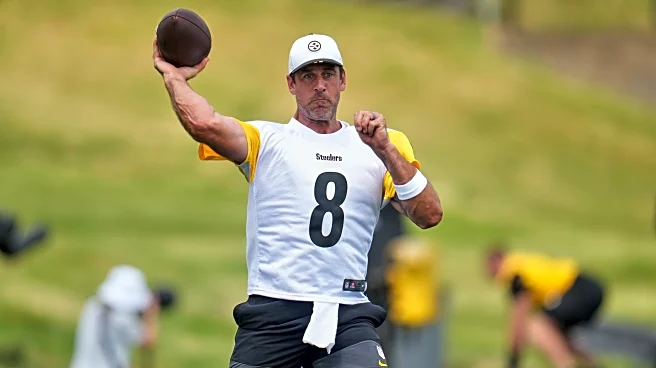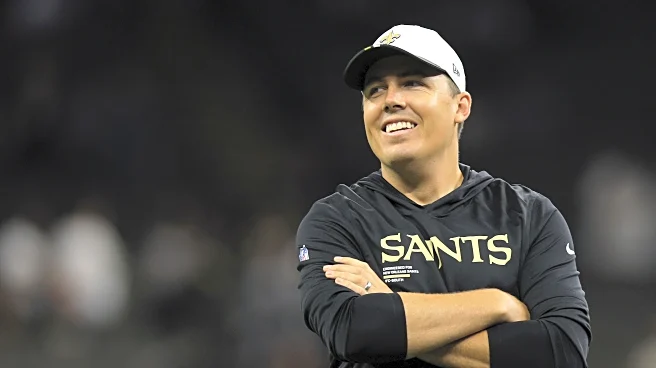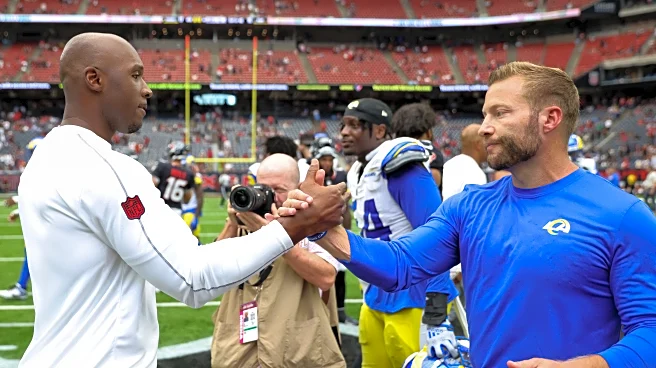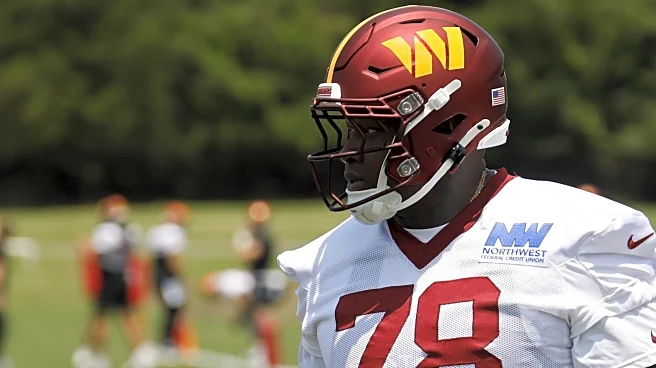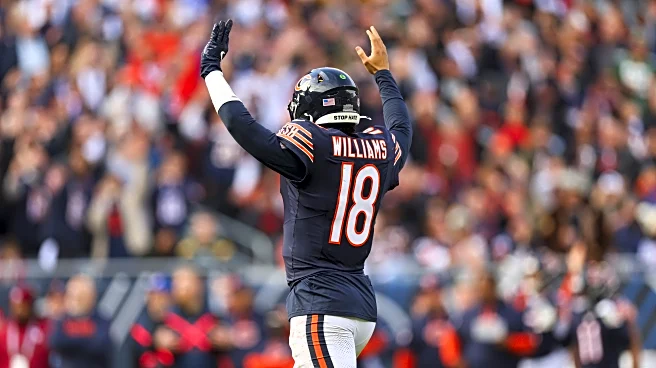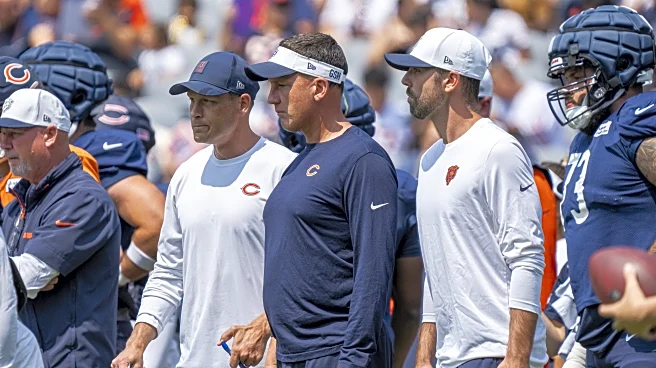
Jets offensive coordinator Tanner Engstrand will be a first time playcaller in the NFL in 2025. This naturally leads to questions about what the Jets offense will look like.
Normally with a first time playcaller, we might look to the last team he was employed by. It figures somebody new to the job would be influenced by the most recent system he helped to run. For Engstrand that was the Detroit Lions. He served as passing game coordinator the last three years.
It’s tough to believe that Engstrand is
going to implement a carbon copy of the Detroit offense this season with the Jets, however. There is a simple reason for that. It would be difficult to find two different quarterbacks stylistically than Jared Goff and Justin Fields. Fields wasn’t just the Jets’ top priority at quarterback this offseason. He was the team’s most coveted player in free agency. It really wouldn’t make much sense to go after Fields if the idea was to be exactly like the Lions. The Jets probably had something different in mind for this offense. So let’s figure out what it is.
The Quarterback Run
We likely will see the Jets make designed quarterback runs a cornerstone of their offense. Goff is simply put, not the type of quarterback for whom an offensive coordinator would design runs. He has only 551 rushing yards in 134 starts across nine seasons.
Meanwhile, since he entered the league in 2021, Fields’ 2,509 rushing yards ranks fourth among quarterbacks. Only Lamar Jackson, Jalen Hurts, and Josh Allen have more. It stands out even more because Fields has only started 45 games in that span. He spent large parts of his first and fourth seasons as his team’s backup quarterback and missed time from injuries in other seasons. His 50.2 rushing yards per game over the course of his career prorates to 850 yards over 17 games.
A fair amount of Fields’ production will obviously come on improvised plays. Just about 60 percent of his career rushing yards have come scrambling on plays that were originally called passes. But the threat of Fields on designed runs.
In Fields’ best season to date, 2022, Chicago dialed up six designed rushes for Fields a game, which netted 43 yards per. This is in addition to scrambles.
We know that the Jets are not going to succeed if Fields has to sit back in the pocket all day scanning defenses. Even in a best case scenario, this Jets offense will be somewhat limited in what it can do passing the ball. Successful passing plays will need to be replaced with successful rushing plays. That will entail keeping the ball in Fields’ hands.
Fields’ ability as a runner could also open up space for Breece Hall and Braelon Allen. If defenders have it in their minds that on each handoff, the quarterback can pull the ball and break a big gain, they will likely be reluctant to be too aggressive barreling towards the running back before the exchange is made.
The Screen Game
I’m guessing this graphic won’t mean much to you on its own so I will explain it. It suggests the Detroit Lions ran screens at an average rate in 2024. However, their screen passes on the whole were more successful than any team other than the Tampa Bay Buccaneers.
There is plenty of debate about whether screen passes are efficient in general, but they are for teams that can execute them at a high level like Detroit.
The Lions have a diverse menu of screens in their playbook.
The Jets will likely benefit from Engstrand bringing this set of plays (in addition to others) over from Detroit.
So what should change? The Jets should really lean into the screen game. This is going to be a team without a particularly dynamic conventional passing attack. Much of this is the result of how limited the talent is at wide receiver after Garrett Wilson.
The Jets do, however, have three running backs in Breece Hall, Braelon Allen, and Isaiah Davis, capable of securing a catch out of the backfield and making a play in space. They also have a speedy rookie wide receiver in Arian Smith who could potentially be dynamic on manufactured touches.
Again, if we are finding ways to replace successful dropback passes, upping the number of screen calls is a logical way to go.
Of course there is a risk. The more you run a particular concept, the less efficient it tends to get. Defenses start to look for it. That will add pressure for Engstrand to come up with creative ways to further camouflague his concepts
Run-Pass Options
The Lions leaned into conventional play action passing as a cornerstone of their offense. They tended to stay away from run-pass options, however. Goff only attempted 22 passes off of RPOs all season in 2024. That season-long number was lower than some backup quarterbacks.
RPOs, however, fit a player like Fields great. In his four year career, Fields has 115 passing attempts on RPOs and 59 rushes. The passes have led to an average of 7.47 yards per attempt, which is over half a yard better than his average on other types of passes. Meanwhile his rushes have netted a very solid 4.76 yards per carry.
Everybody knows that at this point of his career, you aren’t going to have much success with Fields frequently dropping back and going through conventional progressions. He just isn’t there right now as a decision-maker. So the right move is to give him decisions he can make quickly and correctly.
Take this play from Fields’ time with the Chicago Bears.

On this play, if Fields thinks he has a numbers advantage, he can throw a wide receiver screen to the outside.

Otherwise, Fields has the opportunity to hand the ball off if he likes the numbers on the run blocking inside.

Of if he thinks he can beat the unblocked edge defender (who is his read), Fields can pull the ball and break outside.

That defender is unblocked on purpose. He is Fields’ read on the run component of the play. The job of the unblocked edge will be to defend against the outside run by Fields. If he stays at home, the handoff has a higher chance of success since there’s one less defender who can make a play. If he gets caught in no man’s land defending the handoff, Fields pulls it and…


Fields isn’t great at making quick decisions from the pocket at this stage of his career. So the goal should be to give him different types of decisions he can make quickly and allow his athleticism to take over.
Freeing Up Garrett Wilson
Aside from three quarters of a season with Davante Adams, Garrett Wilson has spent his entire career on Jets rosters where he was the only viable target at wide receiver. That doesn’t figure to change in 2025. Wilson will be a focal point for defenses. He will see double teams, traps, and other obstructions as he goes out on routes.
These things haven’t stopped Wilson from being successful to date. They probably won’t stop him from being successful going forward. It is, however, on his coaches to make life as easy as possible for him.
Detroit had a well-designed offense that put its playmakers in a good position to make plays. It is a bit of a different challenge, however, to free up a single receiver whom the entire passing game will run through.
That could involve with Wilson getting more time in the slot this year. With Davante Adams around last year, the slot was largely blocked off from Garrett, who spent roughly only a quarter of his time there. It’s a good place for a go to guy since the receiver has the whole field at his disposal and is typically tougher to press at the line of scrimmage than outside.
But even outside of the slot, Engstrand should use formations and motions to create difficulties for a defense trying to take Garrett away.
Take this snap from preseason where a simple motion forced the Packers to change defenders and gave Garrett an easy angle to take his route to the first down marker unobstructed.



These are the sorts of things we will need to see from Engstrand if the Jets offense is going to surprise people.
